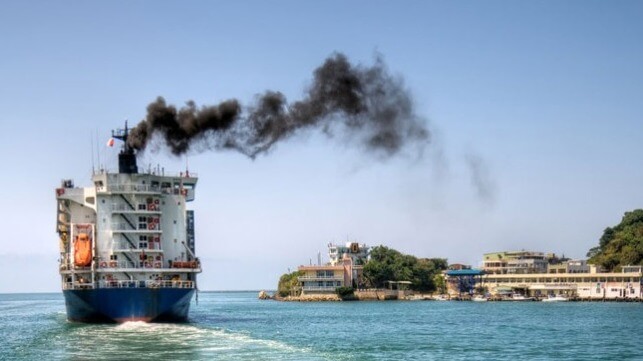EU Moves Forward Including Shipping in ETS to Reduce Carbon Emissions

The European Council and the European Parliament agreed to move forward on the broad plan to introduce and expand the efforts to reduce carbon emissions across a broad range of industries, including placing the maritime sector under the EU Emissions Trading System. The outcome of the negotiations is part of the ongoing effort to finalize the package known as Fit for 55. The final agreement, which only requires formal adoption by the two governing bodies, raises the EU’s overall targets and introduces additional funding to support the transition while incorporating shipping following the terms of the agreement reached at the end of November.
The EU Emissions Trading System is a carbon market based on a system of cap-and-trade of emission allowances for energy-intensive industries and the power generation sector. The sponsors promote it as following the principle that the polluter pays as the EU seeks to reach carbon neutrality. Under the financial agreement reached on December 18, emissions in the ETS sectors must be cut by 62 percent by 2030, compared to 2005, which is one percentage point more than proposed by the Commission. To reach this reduction, there will be a variety of mechanisms aimed at industry sectors, but also required some agreement for more free allowances early on and accelerating the cuts in later years. As they are bringing more industry into the program, more funding will also be provided through an Innovation Fund to support the development of technologies required for the transition.
“The agreement on the EU Emissions Trading System and the Social Climate Fund is a victory for the climate and for European climate policy,” said Marian Jure?ka, Czech minister for environment, in a statement from the European Council. “This will allow us to meet climate objectives within the main sectors of the economy, while making sure the most vulnerable citizens and micro-enterprises are effectively supported in the climate transition. We can now safely say that the EU has delivered on its promises with ambitious legislation and this puts us at the forefront of fighting climate change globally.”
The inclusion of the maritime sector into the EU ETS was a foregone conclusion after the agreement between the different parties just over two weeks ago. While the industry has been critical of the effort, it seemed a further certainty that it would proceed as the International Maritime Organization continues its discussions without new actions. The Marine Environment and Protection Committee concluded its meeting at the end of last week, MEPC 79, with mostly promises to continue the discussions before revising the rules in mid-2023.
The agreement reached by the Council and Parliament on Sunday marketed the first time that shipping has definitively been included in the efforts. They agreed on a gradual introduction of obligations for shipping companies to surrender allowances starting at 40 percent of emissions from 2024, 70 percent for 2025, and 100 percent for 2026. As expected, the rules incorporate most large vessels into the ETS. Big offshore vessels of over 5,000 gross tons and above will be included in the 'MRV regulation' on the monitoring, reporting, and verification of CO2 emissions from 2025 and in the EU ETS from 2027. General cargo vessels and off-shore vessels between 400-5,000 gross tons will be included in the regulation from 2025 and their inclusion in EU ETS will be reviewed in 2026.
In addition, the agreement takes into account geographical specificities and proposes transitional measures for small islands, ice class ships, and journeys relating to outermost regions and public service obligations and strengthens measures to combat the risk of evasion in the maritime sector. They noted as part of the agreement, certain member states with a relatively high number of shipping companies will in addition receive 3.5 percent of the ceiling of the auctioned allowances to be distributed among them. In a key victory for environmentalists, non-CO2 emissions, namely methane and N2O, will be incorporated into the MRV regulation from 2024 and in the EU ETS from 2026.
Many of the leading shipping companies have warned that the adoption of these regulations will add to the cost of shipping. MSC and Maersk for example outlined the anticipated costs that will be passed along to customers due to the ETS program.
Environmentalists welcomed the EU action while also criticizing it as not going far enough in the efforts to reach carbon neutrality. They however share the belief that it will apply additional pressure on the IMO to move forward with broader global programs when it adopts its final revisions in June 2023.
